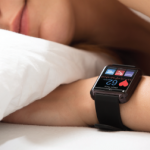“Google does not collect or share answers or results from your self-assessment. We only collect usage data, such as clicks on links at the end of a self-assessment; and we only use that data in ways that do not identify you and that follow our privacy policy,” according to a statement on Google’s self-assessment page that Dr. Jones Bell later cited in an email.
Dr. Jones Bell recommended pairing screening with patient health resources in-clinic, noting Google works with advocacy groups to recommend resources after screens. “It’s so important to have clinicians in the room working with researchers,” she said. “We think information is a determinant of health. …We need to remove gatekeeping in health. We want to enable people to understand what’s happening themselves without talking to somebody.”
In sum, Google wants “to meet people in their everyday moments and equip them with information and tools,” Dr. Jones Bell wrote in an email after the event.
“Chatbots will be integrated into mental health services in the ecosystem overall,” she predicted in her email (though not necessarily by Google), and large language models will become more widespread “pretty soon.” So “it’s important for us to quickly come up with principles to guide the development of them for use with vulnerable populations, such as people suffering from mental health conditions.”
Implementation
Michael R. Crawford, MHL, MBA, and Jorge A. Rodriguez, MD, shared their experiences using and researching many of the new tools.

A panel on use of medical technology featured (L-R): Dawn Morgan, Michael R. Crawford, MBA, Jorge A. Rodriguez, MD, and Tanisha Armstrong.
One problem that has surfaced in implementing the technologies, said Mr. Crawford, associate dean for strategy, outreach and innovation at Howard University College of Medicine, Washington, D.C.: “COVID-19 illuminated that we have a huge trust problem in our healthcare system. We need to overcome that still.”
Mr. Crawford is optimistic about successful systemic change regarding technology because venture capitalists and private equity groups he has been talking with are open to building platforms for the long term, he said. They are listening to this strategy even though it counters the quick-return model many of these firms are accustomed to applying.
Building a better system overall for the long run should be the primary goal, said Dr. Rodriguez, a digital health equity researcher and hospitalist at Brigham & Women’s Hospital and Harvard Medical School, Boston. He often hears from doctors that a tool as simple as patient portals does not work well—for patients or providers, for example. “We need to be more techno-skeptical” and step back, instead of constantly pushing to use new technologies.


